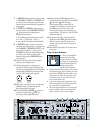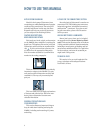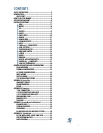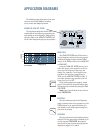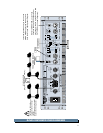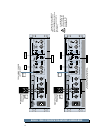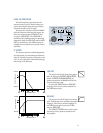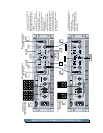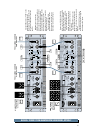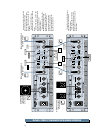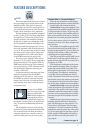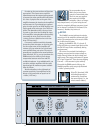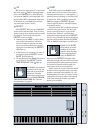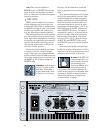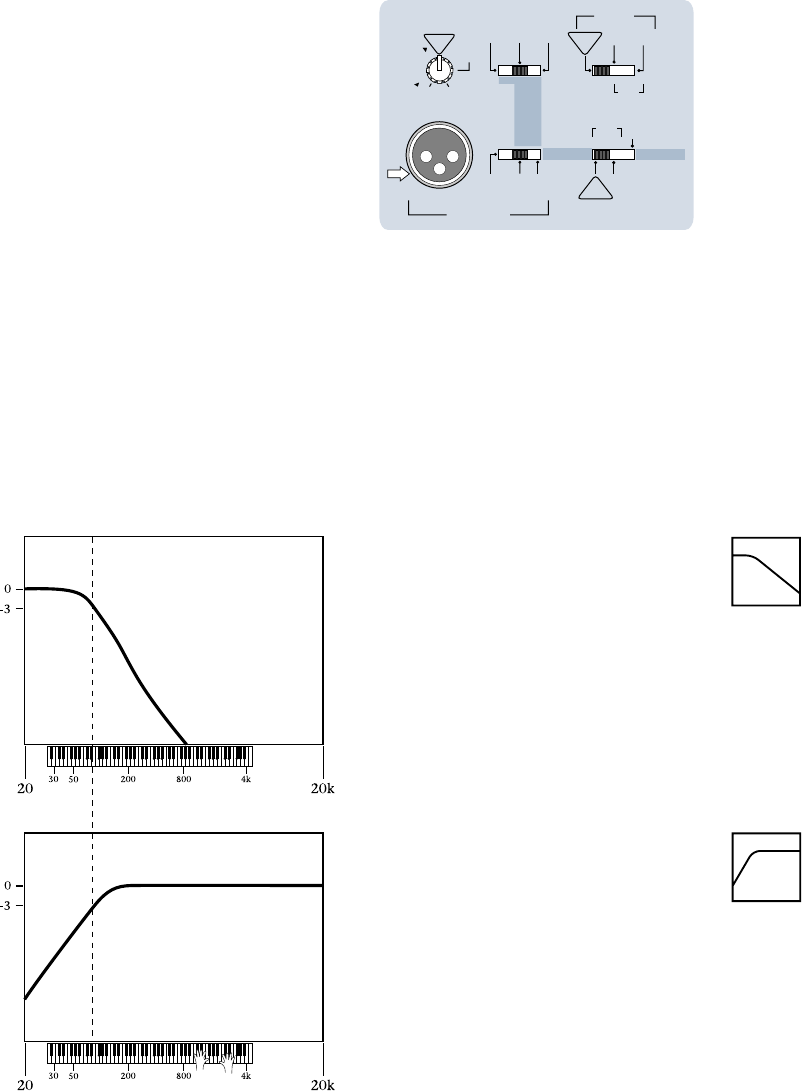
13
LOUDER
QUIETER
crossover point
FREQUENCY IN Hz
FREQUENCY IN Hz
OUTPUT LEVEL dB
LOUDER
QUIETER
OUTPUT LEVEL dB
LOW OUT
The output level rolls off above the crossover
point. By setting the
OUTPUT APPLICATION
switch to
LOW OUT (SUBWOOFER)
, any
speakers attached to the M•2600 will play only
the lower frequency range.
By setting the
THRU
Switch to
LOW OUT
,
this range can be sent to another amplifier via
the
THRU
output jacks.
HIGH OUT
The output level rolls off below the crossover
point. The high range is not available to the speaker
outputs; it can be sent to another amplifier via
the
THRU
output jacks if you set the
THRU
switch to
HIGH OUT
.
The
LOW CUT FILTER
can be used to reduce
the bass level of the speakers attached to the
host amplifer.
STEREO
TYPICAL
S
U
B
W
O
O
F
E
R
TYPICAL
35 Hz
ON
TYPICAL
LOW CUT FILTER
CROSSOVER
SWITCHED OUTPUT
170 Hz
100 Hz
OFF
STAGE
MONITOR
90Hz
LOW
OUT
H
I
G
H
O
U
T
THRU
1
2
0
H
z
60Hz
AMP MODE
B
R
I
D
G
E
D
M
O
N
O
OUTPUT APPLICATION
LIMITER
(CH1 & CH2)
LOW OUT
(SUBWOOFER)
OFF
CH's
SUMMED
FULL
RANGE
THRU
USING THE CROSSOVER
The following three pages show how the
internal crossover can be used to biamp your
system. One amplifer plays the lower frequen-
cies, while another plays the highs.
The electronic crossover inside the M•2600
splits the frequency band into two ranges, one
below the crossover point (
LOW OUT
) and
one above (
HIGH OUT
). The
LOW OUT
is
available to the amplifier section for powering
subwoofers. Both the
LOW OUT
and the
HIGH
OUT
are switchable to the
THRU
outputs, for
sending line-level signals to the inputs of other
amplifiers.
IT’S FREE!
The crossover has been carefully designed to
give high quality, no-compromise performance,
equal to external crossovers (without the extra
cost). It uses a 4th-order Linkwitz-Riley design,
with a slope of 24 dB/octave.



